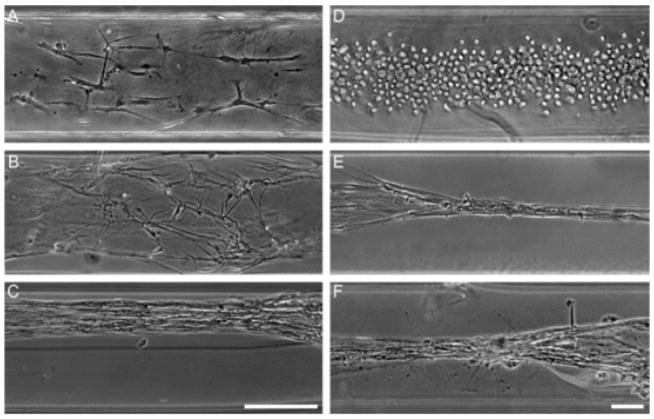Fig. 3.
Formation of dense astrocytic “bundles”. (A–C) High seeding density induced formation of dense, longitudinally aligned bundles of astrocytes. Astrocytes were seeded in 350 μm ID hydrogel micro-columns at (A) low, (B) medium, and (C) high cell densities (N = 15 micro-columns each). Micro-columns seeded at high cell densities were found to consistently produce a robust network of longitudinally aligned astrocytes, whereas low and medium cell densities, although predominantly aligned, did not form such dense bundles. Scale bar: 200 μm. (D–F) Rapid formation of dense astrocytic bundles is not affected by co-seeding with neurons, which were separately isolated and dissociated prior to seeding. (D) Astrocytes seeded in hydrogel micro-columns were spherical with a non-process bearing morphology as they adhered to the internal collagen matrix at 1 h post-seeding. (E) As early as 1 day in vitro (DIV), the astrocytes appeared to remodel the collagen ECM and contracted to form dense bundles of longitudinally aligned astrocytes. (F) Additional micro-columns were co-seeded with neurons (at 1 h post astrocyte seeding); however, the presence of neurons did not inhibit the formation of dense longitudinally aligned astrocytes by 1 DIV. These results suggest that astrocytes dominate the mechanical environment and that co-seeding with neurons does not modulate the astrocytic behavior to remodel and contract the collagen ECM. Scale bar: 100 μm.

